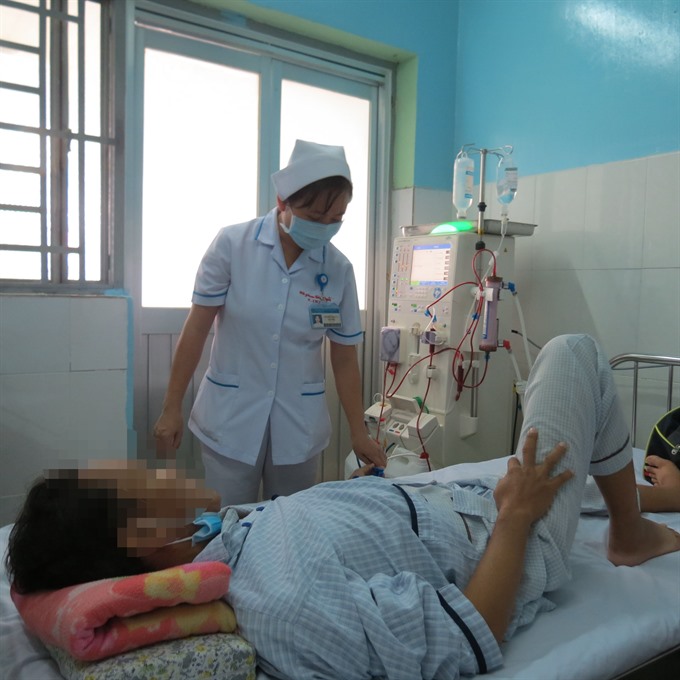 Society
Society

Trần Thị Ngọc, 81, of Thủ Đức District’s Bình Chiểu Ward, no longer goes to the district hospital for treating her joint and heart diseases as the latter recently opened a satellite clinic at the ward health centre.
 |
| A patient getting dialysis done at the satellite clinic. —VNS Photo Gia Lộc |
Gia Lộc
HCM CITY – Trần Thị Ngọc, 81, of Thủ Đức District’s Bình Chiểu Ward, no longer goes to the district hospital for treating her joint and heart diseases as the latter recently opened a satellite clinic at the ward health centre.
She says: “I used to go to the hospital at 4am and wait for four or five hours before being examined. The satellite clinic provides the same service as the hospital.
“My chronic diseases caused by age do not need to go to the hospital for treatment. It is good to get treated at the ward-level clinic.”
The clinic has modern paediatric, obstetric, ophthalmologic and other equipment to treat patients.
Moreover, the clinic helps screen to detect diseases early. Severe cases are transferred to the hospital.
The Thủ Đức District Hospital’s quality management division did a survey of patients’satisfaction with the services at the clinic, and found that more than 95 per cent were satisfied about the quality of examination, treatment, medicines, and tests there.
According to the city’s Department of Health, the number of patients visiting the health centre increased 10-fold last month over July.
Every day seven or eight patients get dialysis done at the clinic, reducing crowding at the Thủ Đức District Hospital.
According to Dr Nguyễn Minh Quân, head of the hospital, the reason for opening a satellite clinic is that Bình Chiểu Ward has a population of 65,000 and many industrial parks and is far from the hospital.
“It is important to improve the capacity of doctors at the health centre. The hospital sends its doctors to train those at the centre.”
The hospital plans to set up two more satellite clinics at health centres in Hiệp Bình Chánh and Linh Trung.
Dr Tăng Chí Thượng, deputy head of the city’s Department of Health, said the Thủ Đức District Hospital needed to speed up procedures to help patients covered by health insurance.
"The satellite clinic at the ward level is the country’s first," he said.
"They can be found only at district- and province-level hospitals run by the Ministry of Health," he said.
Other district-level hospitals in the city should adopt the Thủ Đức model in wards and communes with a large population and far from hospitals, he said.
Đinh Thị Liễu, head of the department’s finance and accounting department, said that the department was set to allocate more than VNĐ200 billion (US$8.8 million) from the health insurance fund to health centres situated in places with large populations to buy more equipment, he said.
Satellite clinics would help the city achieve its target of sending more and more patients to grassroots health facilities for treatment of relatively minor ailments, he said.
Central-and city-level hospitals continue to be flooded by patients whose ailments could be treated by doctors at grassroots-level facilities, he added.
In other countries, when people become sick they first go to grassroots-level health centres, he said, adding that in Việt Nam, especially HCM City, “it is different”.
The department’s statistics show that 52 per cent of patients go to central-or city-level hospitals for minor ailments while only 4-6 per cent go to grassroots-level health centres.
The larger hospitals should focus on treating severe diseases, Thượng said. —VNS




